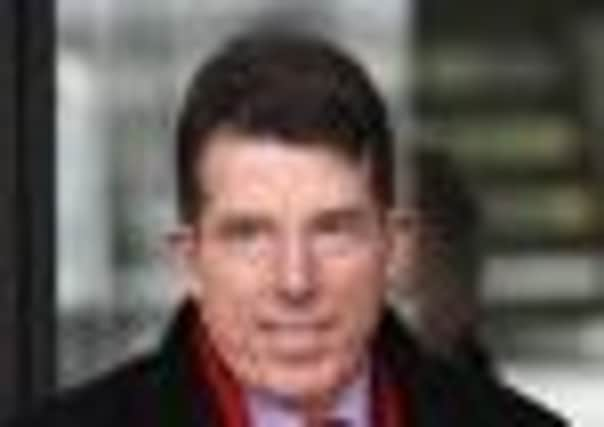Barclays boss Bob Diamond refuses to disclose bonus


Barclays, the UK’s biggest bank, yesterday announced that its profits fell by almost a third to £5.9 billion last year, but failed to disclose what its senior executives will receive as a bonus.
There has been widespread speculation that Mr Diamond, who yesterday avoided questions on his bonus, will receive up to £10 million for 2011 as analysts claimed that Barclays were continuing “business as usual” despite political and public anger over bonuses.
Advertisement
Hide AdAdvertisement
Hide AdHowever, the bank said that cash bonuses would be limited to £65,000 and senior executives would receive a total of 48 per cent less than last year.
Barclays and Lloyds both said that they had beat the Project Merlin targets of lending to businesses, referring to the deal struck with the government to justify bonuses. But after the recent anger which forced Royal Bank of Scotland chief executive Stephen Hester to drop his £930,000 bonus, along with pressure from Labour on the government to introduce a bonus tax, Barclays said it would not be publishing details until March.
However, Mr Diamond refused to be drawn on whether he would accept his bonus. “We are here today to discuss the results,” he said.
He said Barclays would not comment on discussions the bank had held with its institutional investors on remuneration policy, but that relations with them were “close and constructive”.
Mr Diamond added that some shareholders had urged him to do what was necessary to attract and retain top investment banking talent, adding that some had warned him: “Bob, don’t become uncompetitive [on pay].”
However, the Barclays chief did admit that “we need to balance remaining competitive with being responsive to the public mood”.
Unlike RBS, which is 83 per cent owned by the taxpayer following its £45bn bailout by the government, Barclays is not part-owned by the state as it did not need a bailout during the banking crisis.
However, last night Labour shadow business minister Ian Murray, the MP for Edinburgh South, called on Barclays to bring forward its remuneration report, which is not expected to be published until late March, and suggested that the delay was an attempt to avoid some of the anger directed at RBS and Mr Hester.
Advertisement
Hide AdAdvertisement
Hide AdHe said: “Chief executives like Bob Diamond should take note of public anger and should be open about the bonuses they are receiving.
“It seems clear that Barclays and Mr Diamond are delaying publishing his bonus until the furore over RBS and Lloyds has calmed down. However, this issue is not going to go away.”
Analysts claimed that the effect of the announcement was “business as usual” for Barclays and that the reductions announced did not reflect the public mood.
Robert Talbut, chairman of the Association of British Insurer’s investment committee, said: “Whilst overall bonus levels at Barclays have been reduced, for Barclays Capital this reduction is only in line with the fall in profit before tax at BarCap. This appears to be very close to business as usual. It is not the signal of the change required in order to improve the investment case.”
Barclays is not the only bank in the spotlight on bonuses for chief executives. It is expected that HSBC boss Stuart Gulliver could also receive a huge bonus of more than £10m in the next few weeks.
The Lloyds Group, which includes the former Halifax Bank of Scotland and is 40 per cent owned by the taxpayer, is also expected to give its chief executive Antonio Horta-Osorio a bonus of at least £2m.
Profile: Bob Diamond
BOB Diamond’s rise to the position of chief executive of Barclays has capped a glittering career that has made him one of the world’s richest bankers, with an estimated fortune of £95 million.
Brought up as one of nine children by second-generation Scottish and Irish immigrants in Massachusetts, the 59-year-old father of three studied at the University of Connecticut, and was awarded the top MBA from its business school. He became a lecturer there, but moved to Morgan Stanley in 1979 to take up a job as a bond trader.
Advertisement
Hide AdAdvertisement
Hide AdHe then moved to Credit Suisse, and became head of its Asian operations in 1992.
Mr Diamond joined Barclays in 1996, after being offered a job in its BZW stockbroking division.
Following two mergers, he found himself working for Barclays Capital, which gave Diamond the resources to create an investment banking powerhouse.